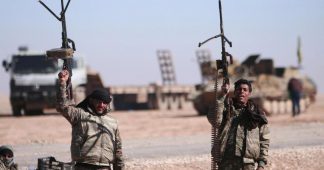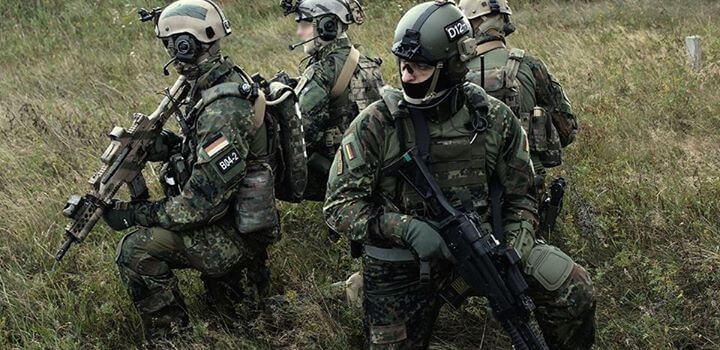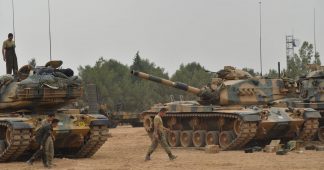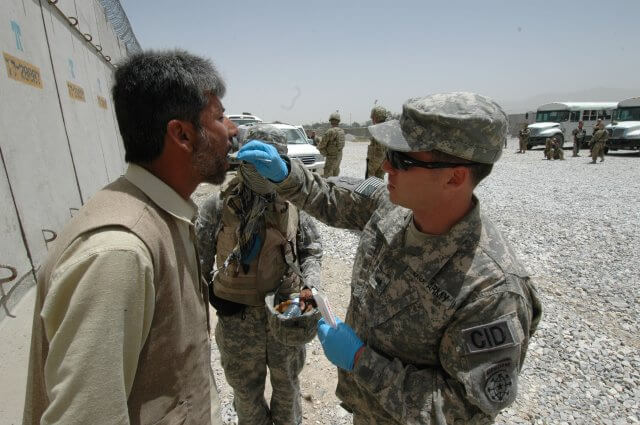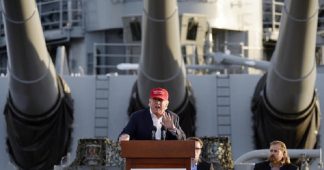By Jordan Shilton
17 June 2017
Secretary of Defence James “Mad Dog” Mattis is set to announce the deployment of up to 5,000 additional troops to wage war in Afghanistan in the coming weeks, following a decision Tuesday by President Trump granting Mattis authority to set troop levels.
The move will mark a dramatic escalation of the longest war in US history, which has already claimed the lives of thousands of US troops and hundreds of thousands of Afghan civilians, and is increasingly developing into a wider regional conflict.
The additional forces are desperately needed to prop up Washington’s crisis-ridden puppet regime in Kabul, which is facing an ever-expanding insurgency led by the Taliban. According to conservative estimates, the Islamist group controls around 40 percent of Afghan territory and is initiating new offensive operations.
Mattis acknowledged in congressional testimony this week that the outlook for US imperialism in Afghanistan is bleak. “We are not winning in Afghanistan right now,” he told the Senate Armed Services Committee, before vowing to change that “as soon as possible.” In what was clearly a criticism of the Obama administration’s drawdown of troops in Afghanistan to the current level of some 9,800, Mattis went on, “It’s going to require a change in our approach from the last several years.”
As well as sending more US forces, Washington is expected to urge its NATO allies to step up their troop commitments. There are currently approximately 5,000 NATO forces deployed in the country.
The corrupt, widely-hated government of President Ashraf Ghani is barely able to exert its authority outside the capital, and even there suicide bombings and other militant attacks occur regularly. A massive suicide bomb exploded two weeks ago, claiming the lives of at least 90 people in the embassy district of Kabul.
On Thursday, a suicide bombing at a Shiite mosque in the capital claimed a further two lives.
The Afghan armed forces, which has been trained and equipped at a cost of billions of dollars, is struggling to cope with the insurgency. Last weekend, three American soldiers died when a Taliban sympathizer, who had infiltrated the army, opened fire on them during a training exercise.
Casualty rates among Afghan troops are high, as shown by figures documenting over 800 deaths in the first two months of 2017. In April, the Taliban launched its bloodiest attack since the beginning of the war, killing some 200 Afghan military personnel at an army base in the north of the country.
While the additional US troops to be deployed will be officially designated as “advisers” to the Afghan forces, it is clear that they will increasingly engage in combat operations. A New York Times report on Tuesday noted that proponents of the deployment hoped that the personnel increase would enable US forces to “advise” their Afghan counterparts closer to the frontline of battle. They are also urging an expansion of the use of US air power to strike more targets.
In Iraq and Syria, similar special forces “advisers” have directed fighting and conducted artillery barrages, including with illegal weapons such as white phosphorus, on civilian centers such as Raqqa and Mosul, leading to the deaths of thousands of innocent residents. Trump’s decision earlier this year to grant more latitude to commanders on the ground to carry out operations is now being repeated in Afghanistan and will have similar results.
The expansion of the air war can only add to the carnage. Just two months ago, the US dropped its largest non-nuclear bomb on a remote mountainous region in the east of the country in what was clearly meant as a warning to its geopolitical rivals and a sign of its determination to use all methods to retain its control over Afghanistan. The bomb was dropped on the eve of Russian-sponsored peace talks with the Taliban.
According to US Air Force statistics, the pace of air strikes has already intensified. More strikes have been conducted over the past four months than at any time since the summer of 2014.
Launched in the wake of 9/11 under the bogus pretext of the “war on terror,” Washington intervened in Afghanistan above all to cement its geostrategic hegemony in the strategically crucial Central Asian region. Control over Afghanistan places the US in close proximity to the energy-rich former Soviet republics to the north, and within striking distance of its main rivals for regional dominance: China, Russia and Iran.
These broader considerations were underscored in an interview given to PBS by retired General David Petraeus, who served as commander of US forces in both Afghanistan and Iraq. He referred to news of the latest troop deployment as “heartening,” before insisting that the US had to remember why they had intervened. “This is a generational struggle. This is not something that is going to be won in a few years,” he declared, before making a comparison with the US presence in Europe following World War II or in Korea following the Korean War.
The New York Times, in a typical war-mongering editorial, urged Trump to assume responsibility for the 16-year-old conflict, declaring, “Mr. Trump, Afghanistan is your war now.”
The immanent escalation of the Afghan war will only lead to a deepening of the crisis confronting US imperialism. Even pro-war stalwarts like Republican Senator John McCain were compelled to point out during Mattis’s Senate testimony earlier this week that the Trump administration has yet to present a strategic plan for Afghanistan.
Mattis vowed to present the strategy by mid-July, but promised to take interim measures, which could include the troop deployment, to halt what he referred to as a Taliban “surge.”
The Times noted that the development of an Afghan strategy is being complicated because discussions in Washington have been widened to include the US stance towards neighbouring Pakistan, which has long provided a safe haven for Taliban fighters and other Islamist militants like the Hakani Network.
Tensions between Pakistan and Afghanistan are high. In May, at least a dozen people died when clashes broke out between the two countries over their disputed border. Without citing evidence, Afghan officials accused Pakistan of being involved in the Kabul suicide bombing that killed 90 earlier in June. Kabul and Islamabad have traded accusations of backing terrorist groups, with Afghanistan accusing Pakistan of assisting the Taliban-aligned Hakani Network. In turn, Islamabad has charged that the Pakistan Taliban enjoys aid from its neighbor.
At the same time, Washington’s relations with Pakistan, which were close throughout the Cold War, have deteriorated as the US has moved over recent years to woo India as a strategic partner as it seeks to encircle and isolate China in the Asia-Pacific. This has included partnership agreements between the US and Indian militaries and efforts to encourage New Delhi to assert its regional authority. Pakistan has reacted with deepening concern and increasingly looked to China for economic and trading relations. Tensions have surged between India and Pakistan over recent months, raising the danger of war between south Asia’s nuclear rivals.
The Trump administration’s strategic review, according to the Times, has thus also had to consider how Washington can manage tensions between Islamabad and New Delhi, with the result that “the Afghan review has turned into a larger review of American policy towards Southwest Asia.”
This only underscores the reckless character of US imperialism. As it escalates the conflict in Afghanistan, plans are already well advanced to ensure it can retain its unchallenged hegemony throughout Central and South Asia, a strategy which raises the prospect of a wider military conflagration, potentially with nuclear-armed adversaries.

